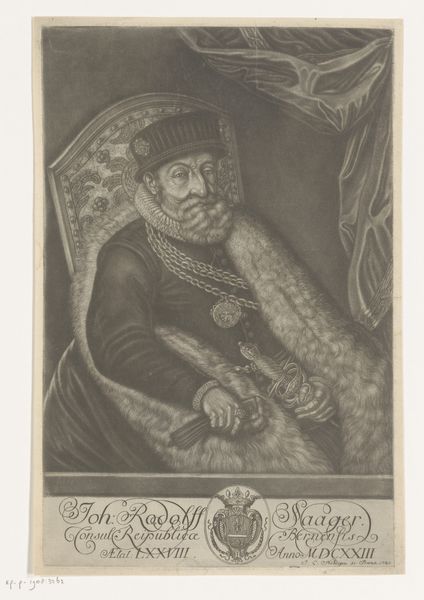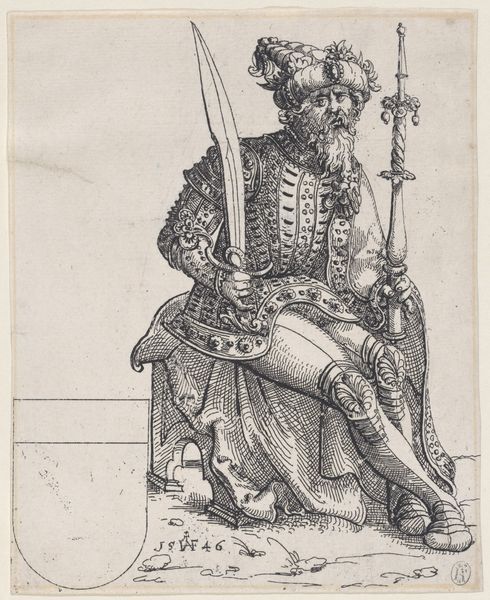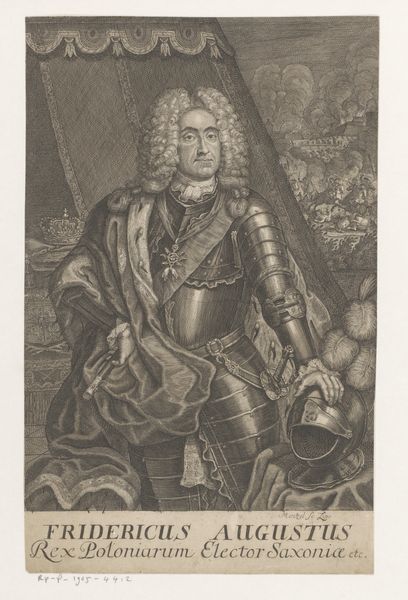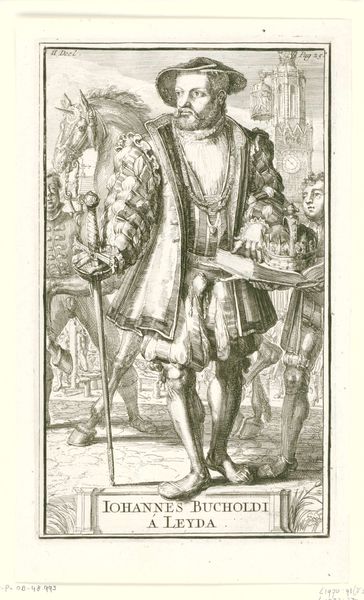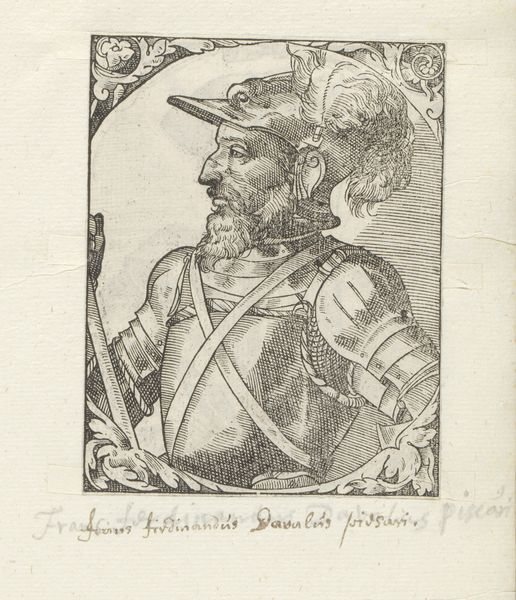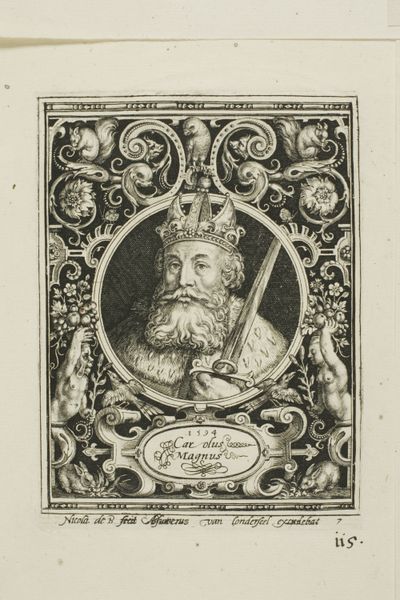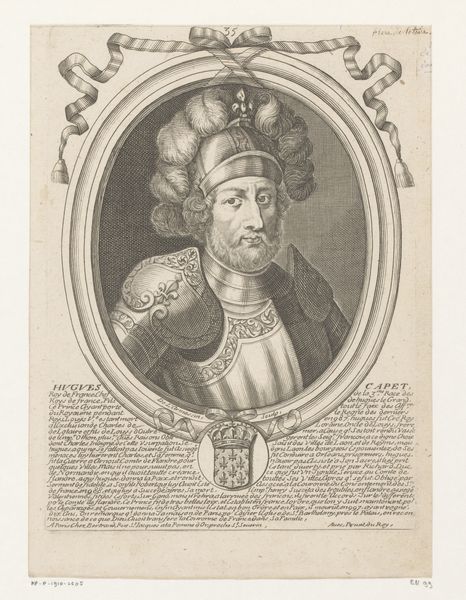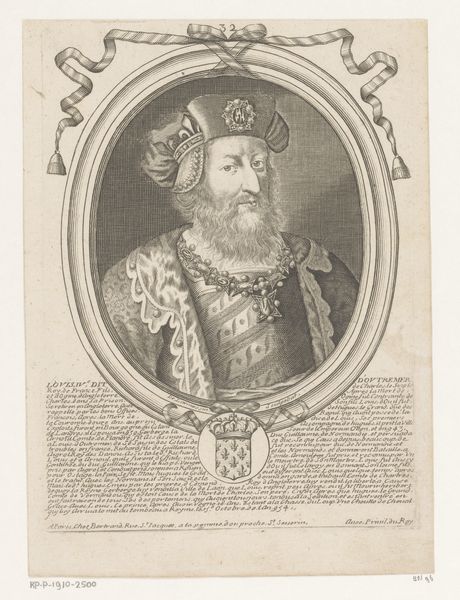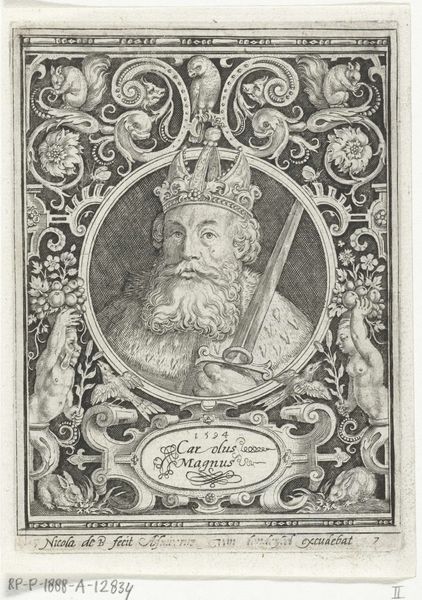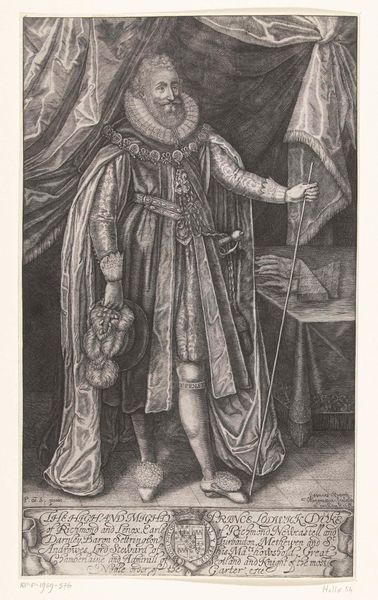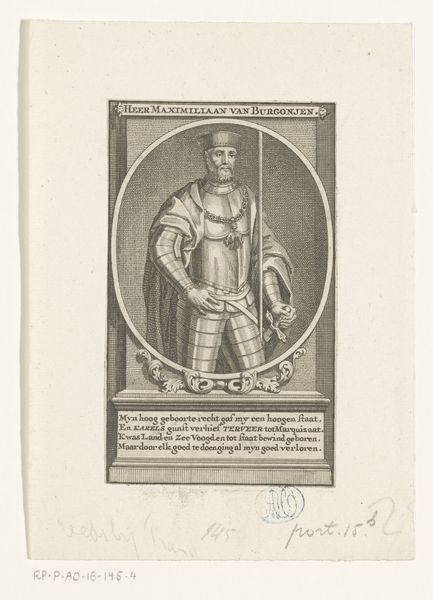
print, engraving
#
pencil drawn
#
baroque
# print
#
pencil sketch
#
old engraving style
#
history-painting
#
engraving
Dimensions: height 363 mm, width 270 mm, height 308 mm, width 270 mm, height 51 mm, width 270 mm
Copyright: Rijks Museum: Open Domain
Editor: So, here we have "Portret Leopold II, keizer van Duitsland," dating roughly from 1657 to 1708, created by Herman Hendrik Quiter as a print. The detail in this engraving is striking, especially in the armor and hair. It feels very stately and powerful, but also a little…rigid, perhaps? How do you interpret this work? Curator: The rigidity you observe speaks volumes about the intended message. Leopold II, Holy Roman Emperor, is meticulously constructed here as the embodiment of divine right and imperial authority. Consider the historical backdrop: the late 17th/early 18th centuries, a period of intense power struggles, religious conflict, and burgeoning nation-states. This isn't just a portrait; it's a carefully crafted piece of political propaganda. Editor: Political propaganda? How so? Curator: Notice the symbolic elements: the laurel wreath evoking Roman imperial power, the armor signifying military strength, and the orb, representing dominion over the world. Quiter is situating Leopold within a lineage of powerful rulers, legitimizing his reign and silencing any challenges to his authority. The artist has chosen the engraving medium purposefully; prints were easily reproduced and widely disseminated, allowing Leopold's image to circulate amongst his subjects, solidifying his power through visual culture. What kind of audience was Quiter trying to appeal to with this engraving? Editor: That makes perfect sense. I hadn't considered the reach of printmaking in solidifying power like that. So, it's less about individual artistic expression and more about reinforcing existing social and political hierarchies? Curator: Exactly! And what does that say about the role of art, then and now? It forces us to confront the ways images can be used to shape our understanding of the world and perpetuate power structures. Editor: I see. It definitely gives me a lot to think about concerning the impact and legacy of art throughout history. Curator: Indeed. Let’s now consider other artwork in the gallery to evaluate those elements again, using these questions.
Comments
No comments
Be the first to comment and join the conversation on the ultimate creative platform.


